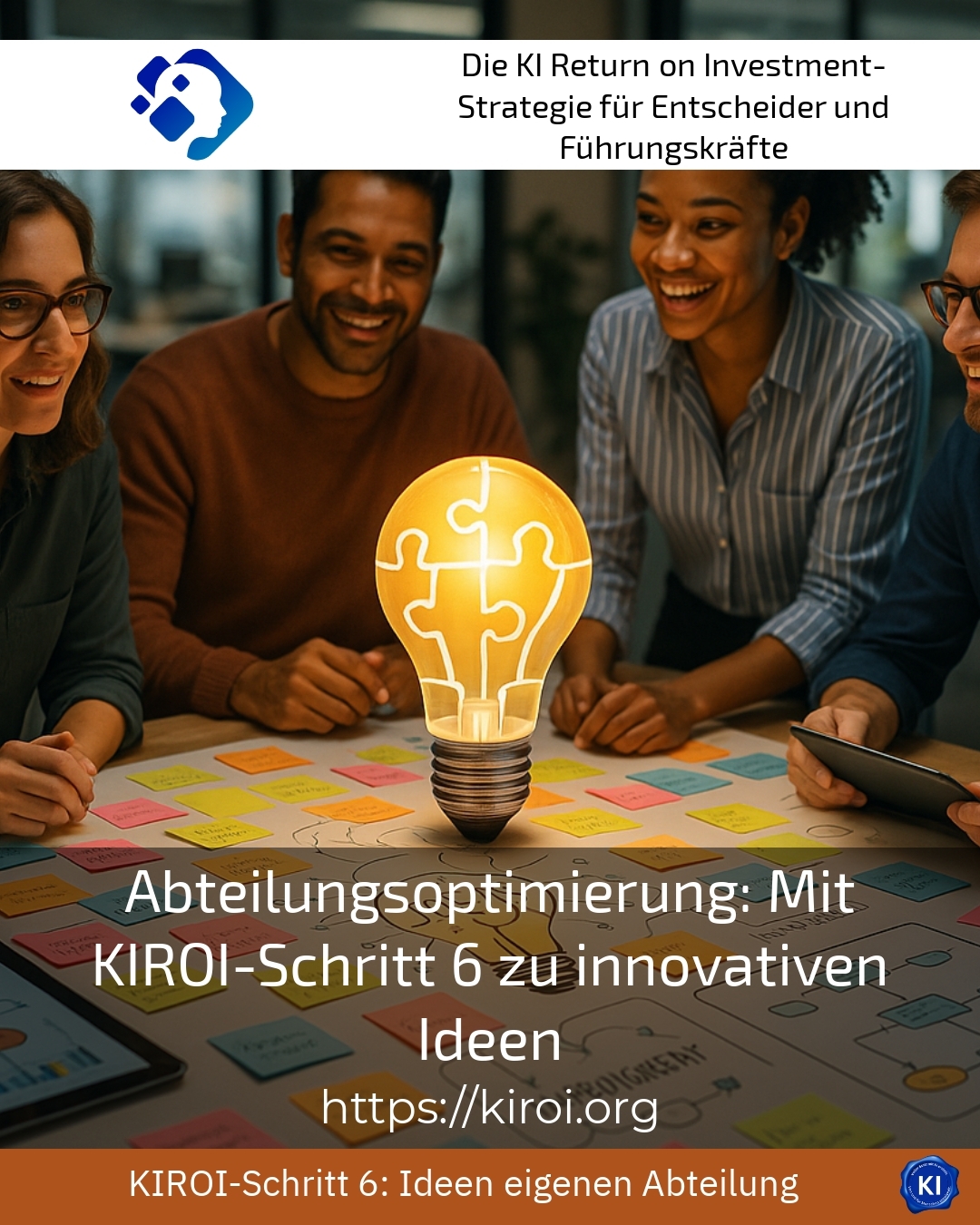Departmental optimisation is seen as the key to making processes more efficient in companies and making better use of innovation potential. The sixth step of the KIROI method in particular provides valuable impetus to promote creative ideas in the departments and thus initiate sustainable improvements. This step helps teams to develop innovative solutions and actively support change. Departmental optimisation is therefore more than just a process - it is a strategic tool that helps companies to become more flexible and competitive.
Department optimisation through creative impulses: KIROI step 6
In the context of departmental optimisation, it often becomes apparent that pure process improvements are not enough. It is about integrating new perspectives and providing creative food for thought. KIROI Step 6 is tailored precisely to this challenge. It systematically supports departments in developing ideas by motivating teams to think outside the box and generate innovative solutions. The interplay between creativity and structure is crucial for success. In practical terms, this means, for example, that the logistics department uses KIROI Step 6 to test new approaches to warehouse management or the IT department develops alternative approaches to troubleshooting.
This method not only promotes employees' own initiative, but also creates a clear framework for implementation. This makes it possible to strike a balance between creative freedom and goal-orientated action and to produce sustainable innovations.
Best practices: How different departments benefit from KIROI Step 6
In the area of marketing, teams with KIROI Step 6 have often developed new campaign strategies that transcend traditional boundaries. For example, an agency initiated a digital event series that intensified customer interaction and brand loyalty. At the same time, the development department of a manufacturing company developed innovative product ideas in interdisciplinary workshops. With targeted support, they were able to quickly evaluate the proposals and create initial prototypes.
Another example shows the sales department of a company that opened up new sales channels through structured idea generation. Here, personalised customer approaches were developed with the help of KIROI Step 6, which contributed to an increase in closing rates.
BEST PRACTICE with one customer (name hidden due to NDA contract) The team from the sales department identified innovative webinar formats during the department optimisation with KIROI Step 6 and developed personalised offers. These were successfully implemented on an interdisciplinary basis, which significantly strengthened customer loyalty and opened up new sales potential.
The role of teamwork and the organisation of open communication processes
A central element of departmental optimisation through KIROI Step 6 is the promotion of teamwork and open communication. Only when employees are actively involved and exchange ideas can sustainable ideas emerge. The method emphasises the importance of promoting creativity in exchanges between different perspectives. For example, the HR department and IT jointly utilise new digital tools for talent management, thereby improving both applicant communication and internal training.
In customer service, too, cooperative idea development via KIROI step 6 often leads to innovative solutions that measurably increase customer satisfaction. Methods such as structured brainstorming sessions or digital platforms are used to collect ideas, which increases the innovation dynamic in the department.
Practical tips for implementing KIROI step 6
For successful department optimisation, it is advisable to consider the following points:
- Ensure support from managers to increase the acceptance of innovative approaches.
- Establish regular workshop formats that offer teams space to generate creative ideas.
- Use digital tools and methods such as design thinking or lean innovation to systematically structure and evaluate ideas.
- Incorporate results-orientated feedback loops so that implementation progress remains transparent.
- Combining experience from different departments to create synergy effects.
For example, the marketing department can benefit from sales strategies, while production learns from innovations in customer service. This promotes a holistic improvement process that strengthens the entire organisation.
My analysis
Department optimisation with KIROI Step 6 offers effective support to activate and creatively shape innovation processes within the company. In particular, the focus on promoting ideas and structured implementation provides important added value. Companies benefit from this because they not only improve current processes, but also tap into new potential. At the same time, the method helps to actively involve employees and strengthen teamwork. In this way, departmental optimisation with KIROI creates a bridge between traditional process improvement and innovative thinking.
Further links from the text above:
Department optimisation: With KIROI step 6 to innovative ideas
Department idea optimisation: With KIROI step 6 to success
Process optimisation: definition, objectives, phases, procedure
For more information and if you have any questions, please contact Contact us or read more blog posts on the topic Artificial intelligence here.















